

The strange story of the world's most famous logo
source link: https://www.bbc.com/culture/article/20131009-dc3-still-flying-at-70
Go to the source link to view the article. You can view the picture content, updated content and better typesetting reading experience. If the link is broken, please click the button below to view the snapshot at that time.
Log in to a live flight-track website and follow BFL168 as it climbs to 6,000ft and cruises at 155 mph (250 kph) just south of the Arctic Circle. This is a scheduled flight from Yellowknife to Hay River in the Northwest Territories of Canada. You will see that the 45-minute trip, operated by Buffalo Airways, is nearly always on time. What might surprise you is the type of aircraft that makes this daily journey in what can be decidedly harsh conditions. No, not some smart new jet equipped with every latest safety device and digital gizmo, but a 28-seat Douglas DC-3 (twin-piston).
What this means is that the very youngest of the aircraft operated by Buffalo Airways on flight 168 are two years shy of their 70th birthday. And, if all goes to plan, the legendary DC-3 will be the first airliner to fly into its second century.
Altogether about 16,000 American, Russian and Japanese-built Douglas DC-3s, and also C-47 Skytrains, ‘Dakotas’, Lisunov Li-2s, and Showa and Nakajima L2Ds – the near identical military versions built in the 1940s – took to the air from December 1935. Around 2,000 fly today. Some of these sleek, stressed-metal aircraft are used for fire−fighting and crop spraying, some for rescue work, research and exploration, and others for freight, films, and joy flights.
I am lucky enough to have co-piloted a DC-3 in India. It was not, but could easily have been, one of the ‘Dakotas’ my father and his RAF colleagues protected in 1944, as each of these hugely capable aircraft dropped two tons of supplies and equipment for British and Commonwealth troops fighting the Battle of Kohima. This was a turning point in the War in the East, when the Japanese – attempting to invade India across the Naga Hills – were beaten to a standstill, and ignominious retreat.
DC-3s were also among the heroes of the Berlin Airlift of 1948-9 when Allied aircraft fed Berlin as Stalin tried to starve the city into Soviet submission. If ever an airliner deserved a medal, it was the Douglas DC-3.
Revolutionising aviation
Designed and built in California by the Douglas Aircraft Company, the DC-3 had originally been designed as a luxury airliner for American Airlines flying 14-berth sleeper services complete with dressing rooms, a ‘honeymoon cabin,’ and a galley serving hot meals, from New York to Chicago.
A development of the earlier, smaller, and slower DC-2 and solitary prototype DC-1 of 1932, the DC-3 made trans-American and, almost immediately afterwards, trans-world passenger flights, not just possible, but safe, comfortable, and profitable.
Designed by a team led by Arthur E Raymond, who later worked on the Gemini and Apollo space missions for NASA, the DC-3 went straight into production. Within a year, Royal Dutch Airlines [KLM] was flying a DC-3 service from Amsterdam to Sydney.
What was clear from the start was that the DC-3 – a truly forward-looking design in an age of box-like passenger bi-planes – was very strong indeed. And, because its cabin was unpressurised, the DC-3 has never been prey to the kind of metal fatigue caused by ‘pressurisation cycles,’ whereby fuselages are forced to expand and contract.
Versatile veteran
Easy to fly, simple to maintain, and able to take off and land in short distances from dirt strips and grass runways, the DC-3 was a natural military transport plane when war broke out between the United States and Japan in 1941. It became so well known, and respected, during World War II that it was hardly surprising that, from 1945, military DC-3s became the mainstay of newly formed and established airlines around the globe.
It might not have been the fastest, quietest or most luxurious airliner, and it has often been described, fondly, as ‘a collection of parts flying in loose formation,’ and yet pilots and operators worldwide liked to say that the ‘only replacement for a DC-3 is a DC-3.’
On skis, DC-3s have flown to and from the North and South Poles. On floats, they have served as seaplanes. A jet-assisted DC-3 has been launched from an aircraft carrier.
Another DC-3 played the leading role in the mystery of BOAC flight 777 from Lisbon to Bristol in June 1943. Attacked by eight Junkers Ju 88s, the aircraft plunged into the Bay of Biscay along with the actor, and possible British spy, Leslie Howard, Reuters’ Washington correspondent, Kenneth Stonehouse, and Wilfrid B Israel, a Jewish activist who had helped thousands to escape the Holocaust. The Germans may have thought that Winston Churchill was on board.
The DC-3 has flown through dramatic times. It seems a wonder that this beautifully- designed and engineered airliner should still be flying a daily scheduled route in northern Canada in the second decade of the 21st Century. But it does, and does it well: DC-3s have a long life ahead of them yet.
If you would like to comment on this story or anything else you have seen on BBC Culture, head over to our Facebook page or message us on Twitter.
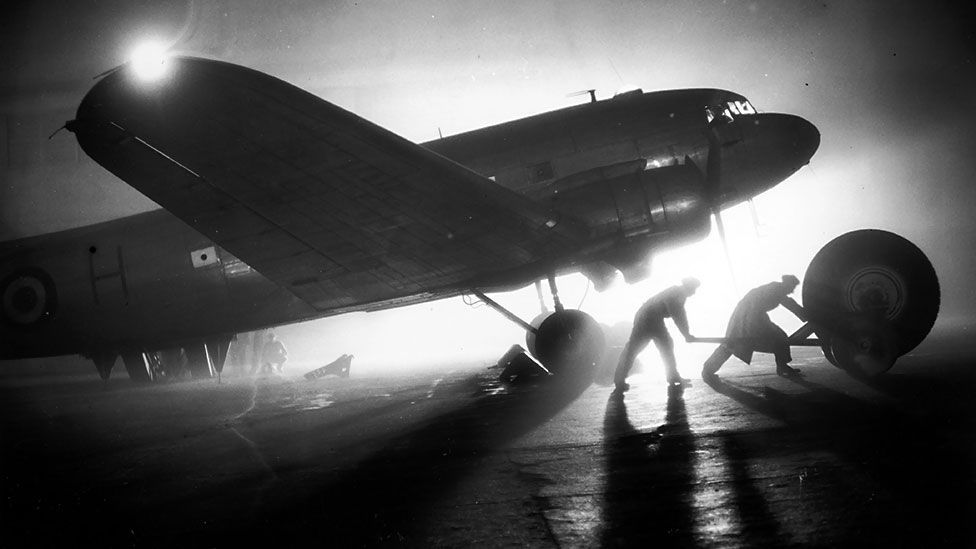
Originally designed as a luxury airliner – complete with honeymoon cabin – the Douglas DC-3 may become the first airliner to mark 100 years of service. (Getty)
Originally designed as a luxury airliner – complete with honeymoon cabin – the Douglas DC-3 may become the first airliner to mark 100 years of service. (Getty)
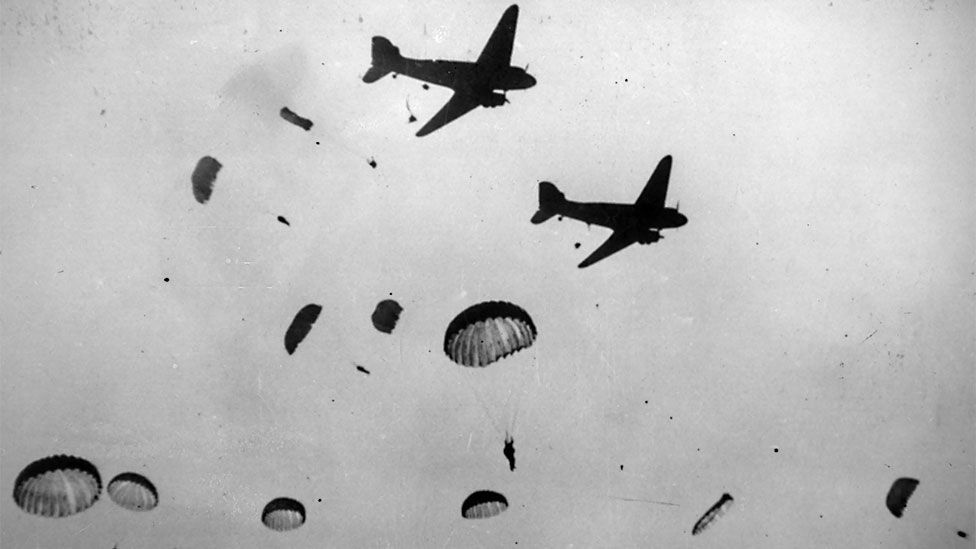
Allied paratroop operations relied on the Dakota, as military DC-3s were called. Thousands flew during the invasion of Sicily, D-Day, and Arnhem. (Keystone/Getty)
Allied paratroop operations relied on the Dakota, as military DC-3s were called. Thousands flew during the invasion of Sicily, D-Day, and Arnhem. (Keystone/Getty)
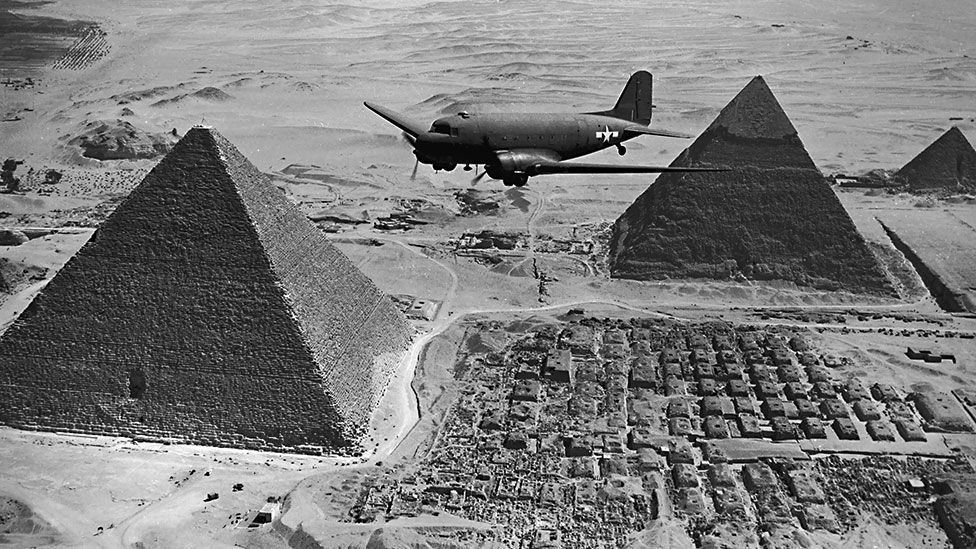
The US Army Air Force used DC-3s extensively in World War II, like this Dakota transport variant flying urgent war supplies over Egypt in 1943. (Keystone/Getty)
The US Army Air Force used DC-3s extensively in World War II, like this Dakota transport variant flying urgent war supplies over Egypt in 1943. (Keystone/Getty)
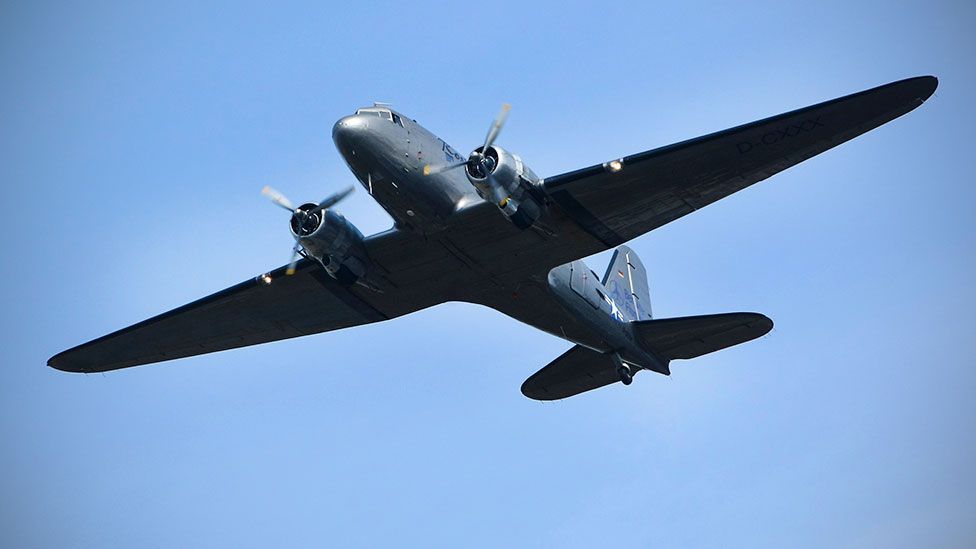
DC-3s served on both sides in World War II. Licence-built versions by Japanese plane-makers Nakajima and Showa flew against the Allies during the conflict. (Getty)
DC-3s served on both sides in World War II. Licence-built versions by Japanese plane-makers Nakajima and Showa flew against the Allies during the conflict. (Getty)
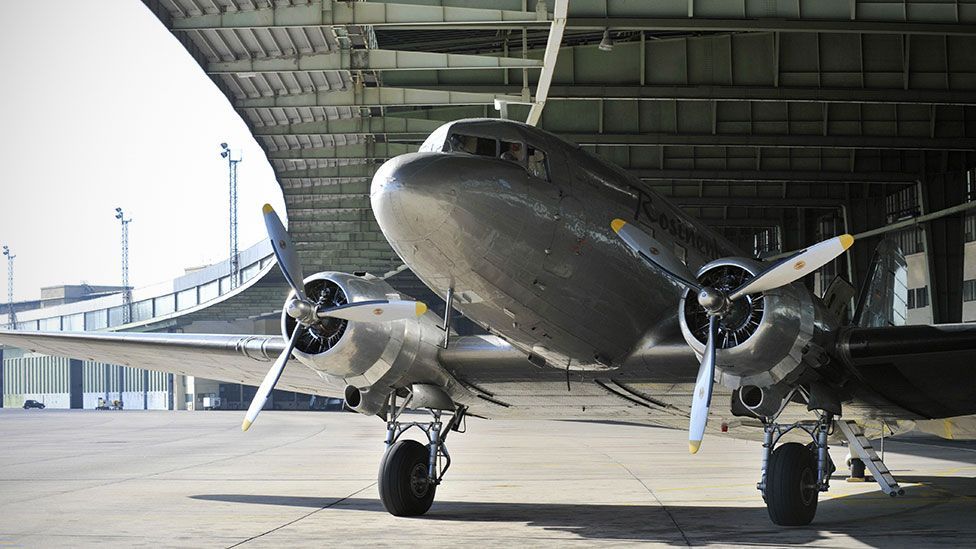
After World War II, the DC-3’s iconic status was cemented; RAF DC-3s helped keep the people of West Berlin fed during the Berlin Airlift of 1949. (AFP/Getty)
After World War II, the DC-3’s iconic status was cemented; RAF DC-3s helped keep the people of West Berlin fed during the Berlin Airlift of 1949. (AFP/Getty)
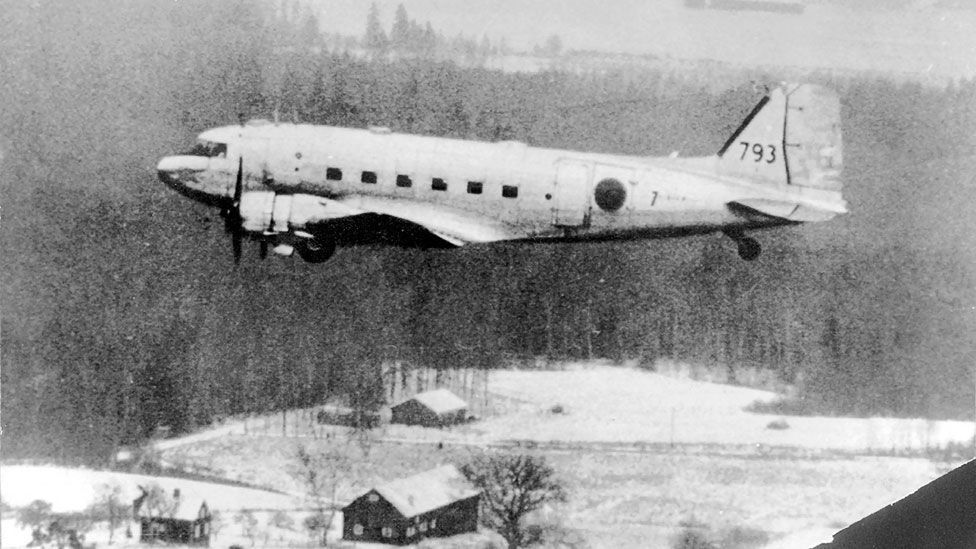
A Soviet fighter shot down an intelligence-gathering Swedish air force DC-3 in 1952. It was discovered at the bottom of the Baltic Sea in 2003. (AFP/Getty)
A Soviet fighter shot down an intelligence-gathering Swedish air force DC-3 in 1952. It was discovered at the bottom of the Baltic Sea in 2003. (AFP/Getty)
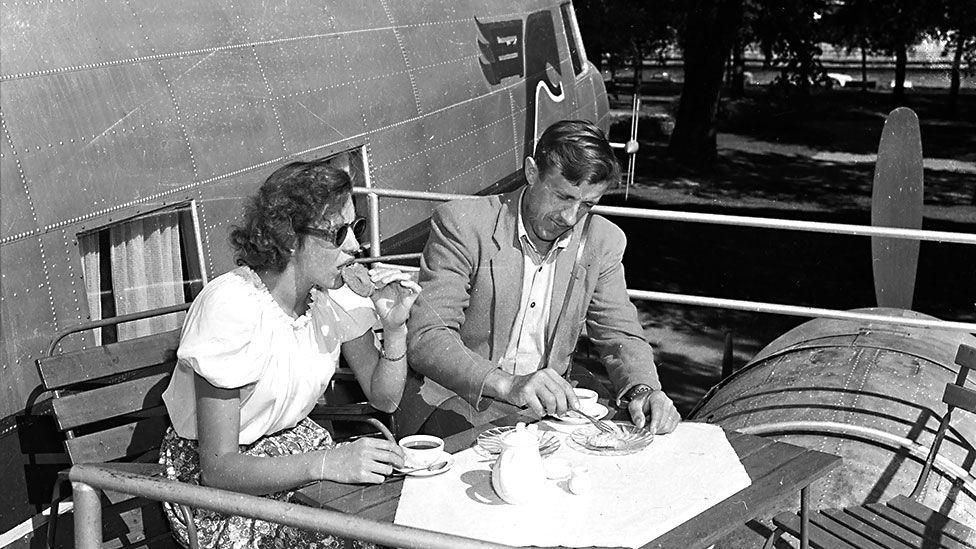
In 1956, Swedish owners Carl and Amy Ostman converted a US Air Force DC-3 into an exclusive restaurant in Stockholm. (BIPs/Getty)
In 1956, Swedish owners Carl and Amy Ostman converted a US Air Force DC-3 into an exclusive restaurant in Stockholm. (BIPs/Getty)
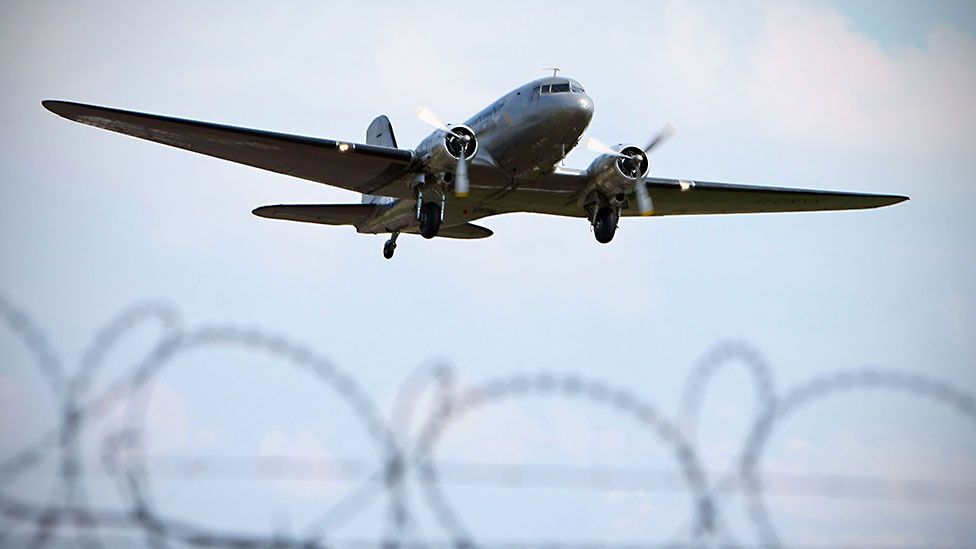
Engineer Arthur E Raymond designed the DC-3 to have either 16 sleeping berths for overnight travel or 21 seats. (Getty)
Engineer Arthur E Raymond designed the DC-3 to have either 16 sleeping berths for overnight travel or 21 seats. (Getty)
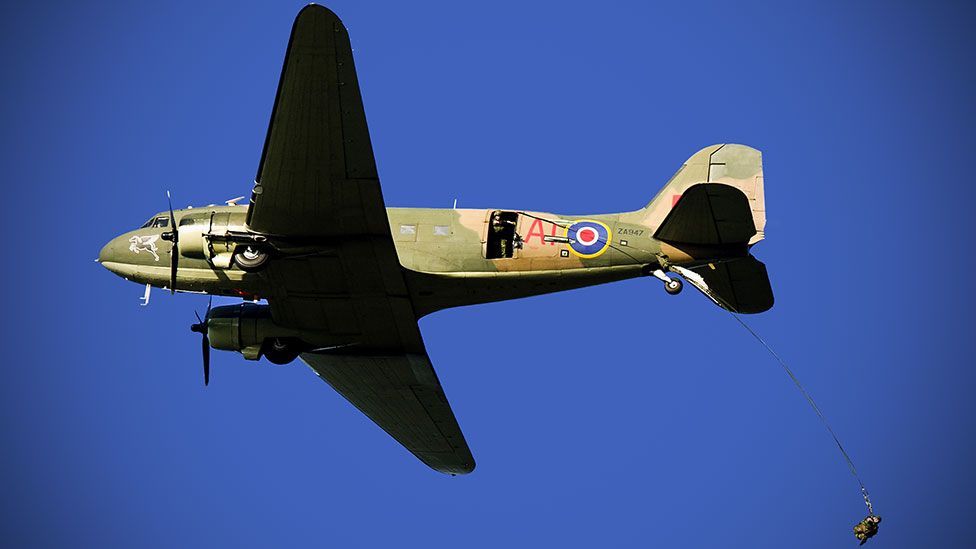
Hollywood actress Carole Lombard died in 1942 when her DC-3 crashed outside Las Vegas following a war bonds drive. Orson Welles claimed it had been sabotaged. (Getty)
Hollywood actress Carole Lombard died in 1942 when her DC-3 crashed outside Las Vegas following a war bonds drive. Orson Welles claimed it had been sabotaged. (Getty)
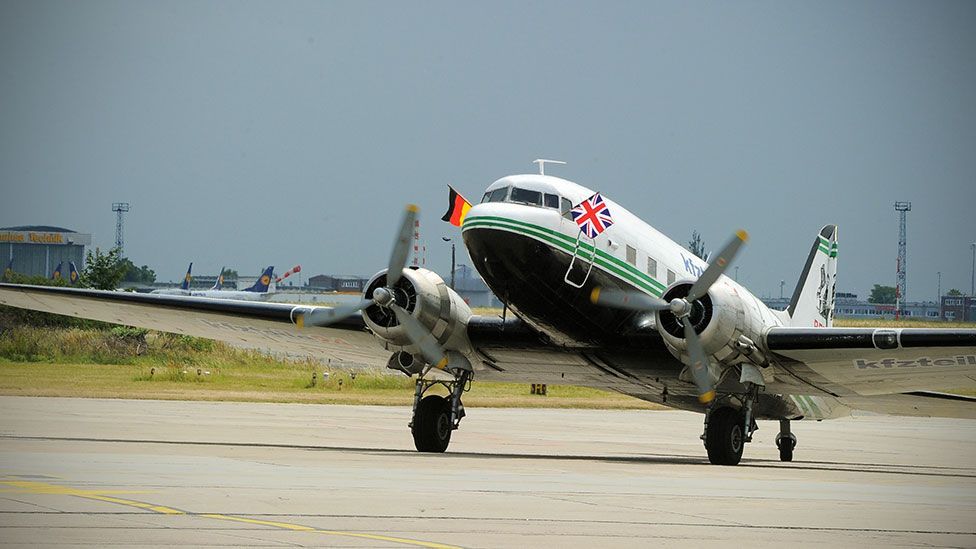
Dozens of DC-3s remain in service, with some even carrying on as airliners on scheduled services to this day. (AFP/Getty Images)
Dozens of DC-3s remain in service, with some even carrying on as airliners on scheduled services to this day. (AFP/Getty Images)
Recommend
About Joyk
Aggregate valuable and interesting links.
Joyk means Joy of geeK